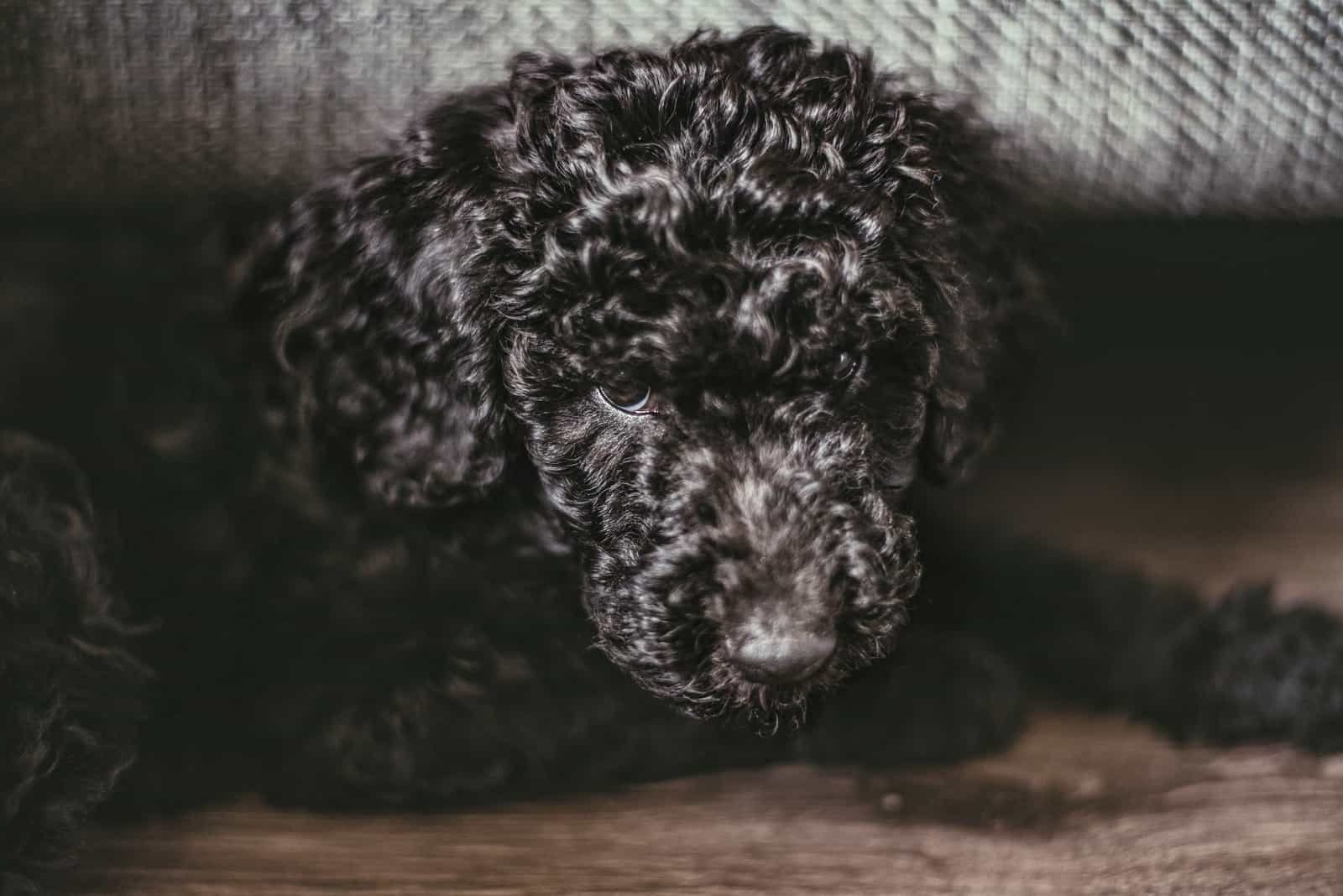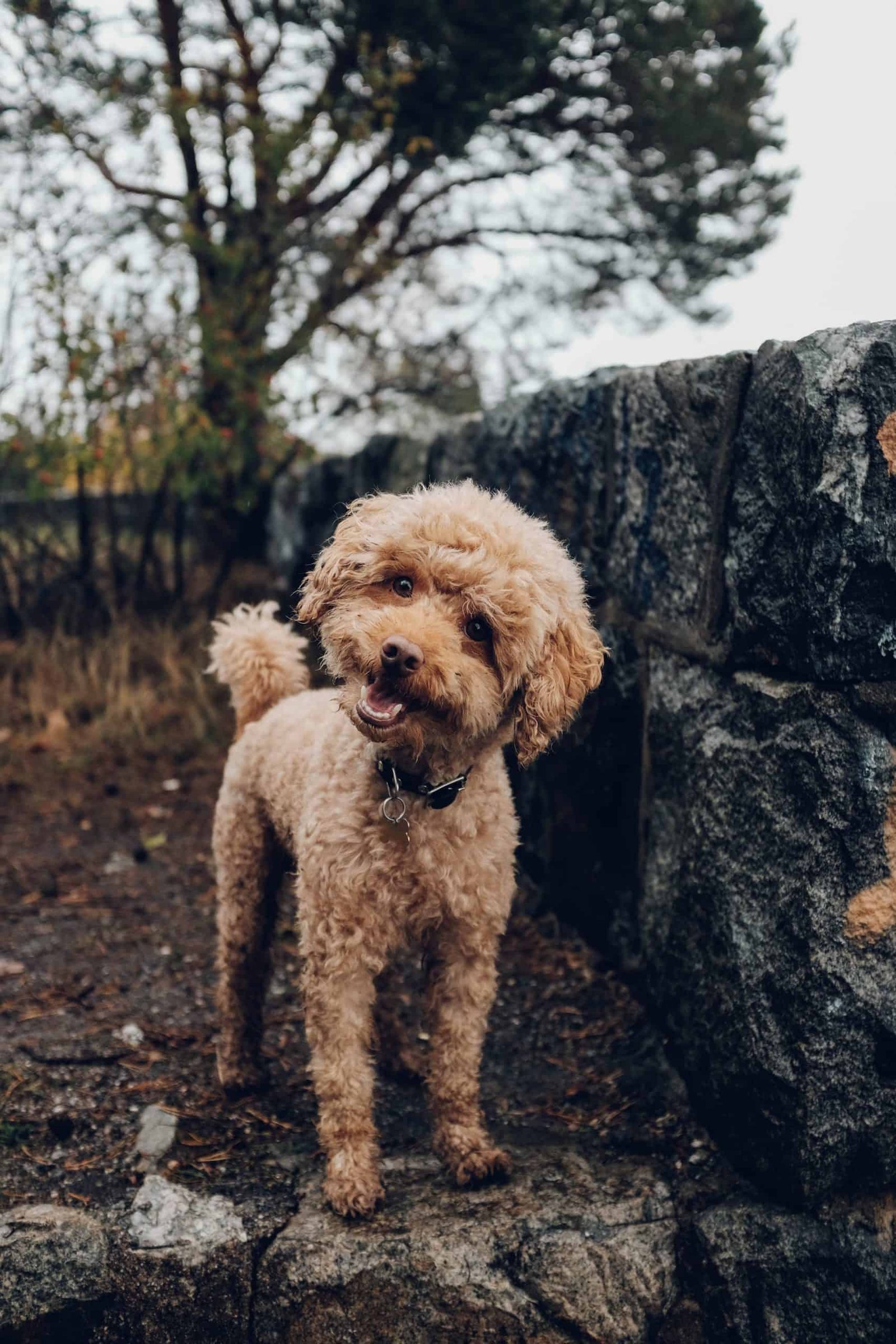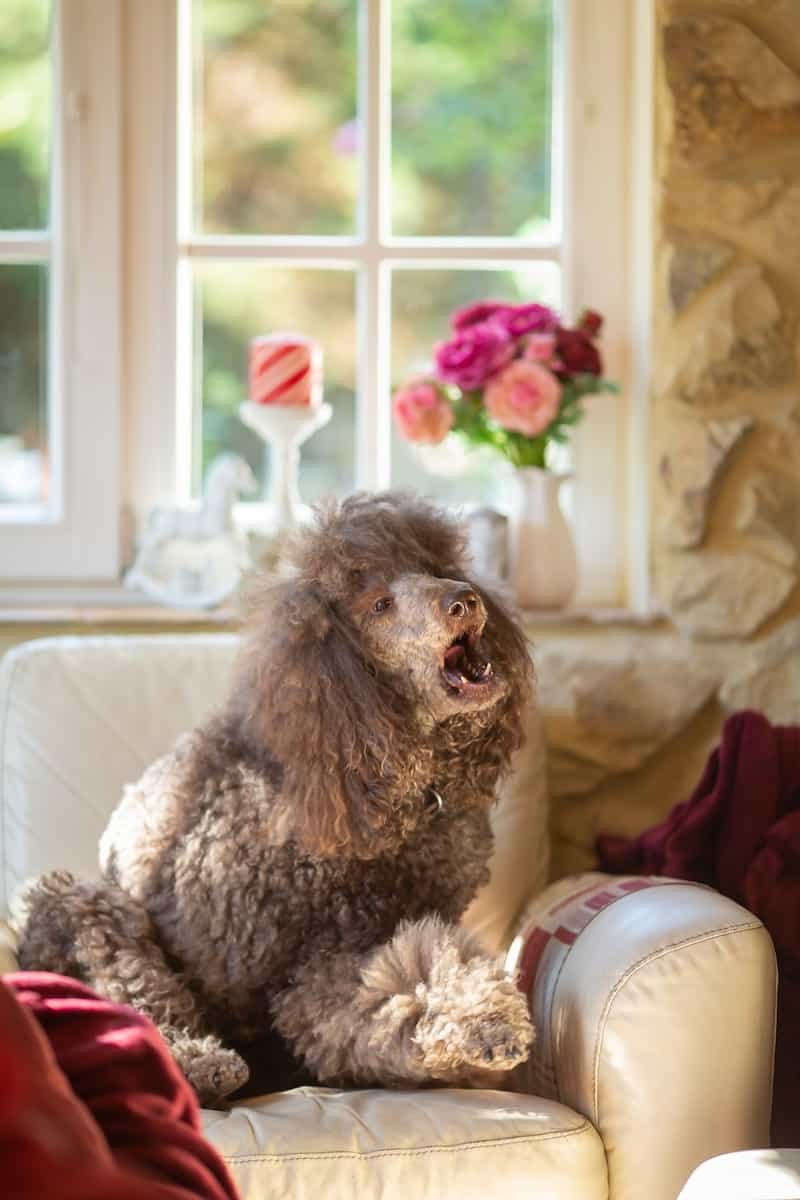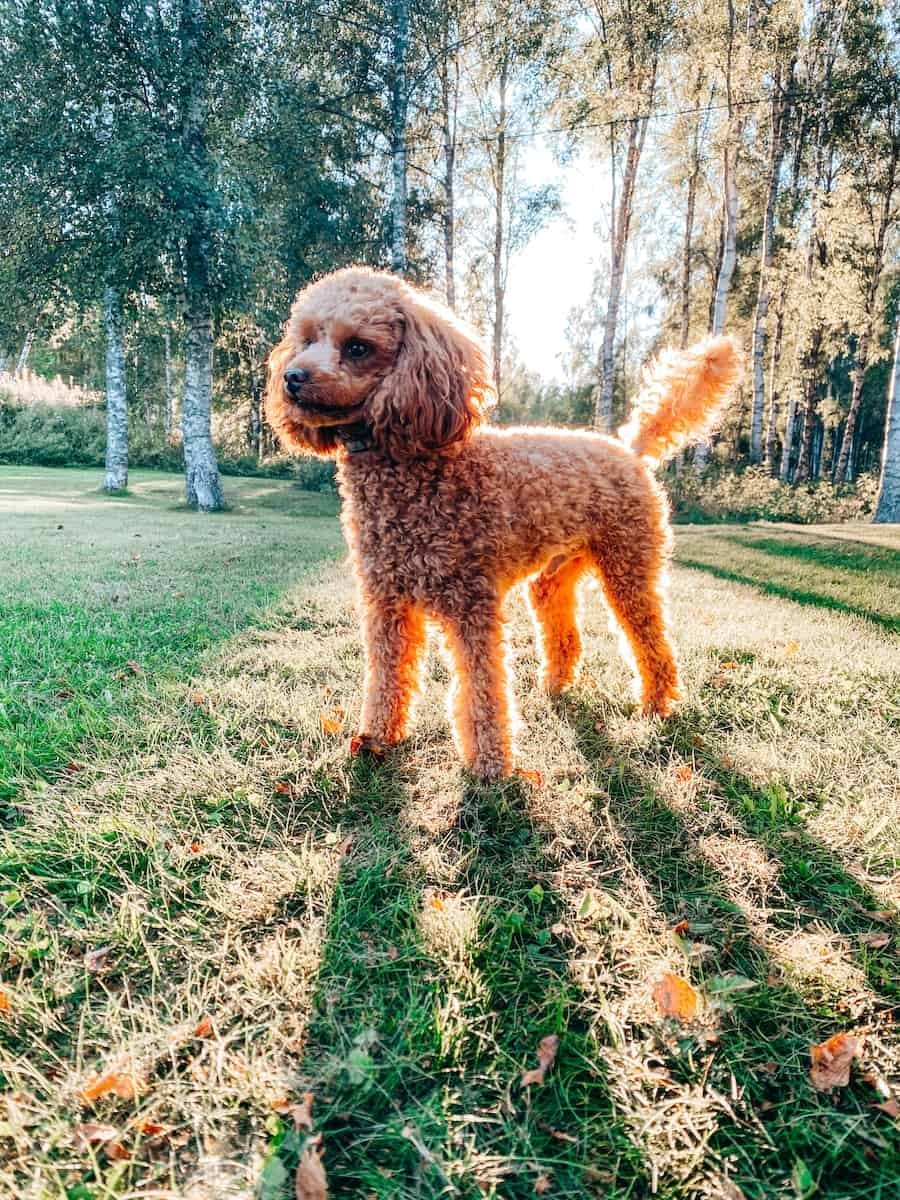Giant Poodles, also known as Royal Poodles, are a fascinating breed of dog that have captured the hearts of many pet owners. These dogs are the largest members of the poodle family and are known for their intelligence, playfulness, and friendliness. Although the American Kennel Club does not recognize them, many people are drawn to their majestic appearance and loving personalities.
Last Updated: November 2025 · This article has been reviewed and updated to ensure accuracy and relevance.
The history and origin of Giant Poodles can be traced back to Germany, where they were bred to be hunting dogs. Over time, they became popular as show dogs and eventually made their way into homes as beloved pets. Today, they are cherished by many families for their loyalty and affectionate nature.
If you’re considering adding a Giant Poodle to your family, it’s important to understand their physical characteristics, behavior and temperament, health and lifespan, care and maintenance, breeding and rarity, and cost considerations. With proper care and attention, these dogs can live long and happy lives, bringing joy and companionship to their owners.
Related Reading: Complete Poodle Breed Guide – Characteristics, Care Training
Interesting Notes:
- Giant Poodles are the largest members of the poodle family and are known for their intelligence, playfulness, and friendliness.
- These dogs have a rich history and were originally bred as hunting dogs in Germany.
- Potential owners should consider the breed’s physical characteristics, behavior and temperament, health and lifespan, care and maintenance, breeding and rarity, and cost considerations before bringing a Giant Poodle into their home.
History and Origin
The Giant Poodle is a variety of the Poodle breed, which originated in Germany in the Middle Ages. The breed was initially developed as a water dog, and its name is derived from the German word “pudel,” which means “to splash about.” The Poodle was bred to retrieve waterfowl, and its curly coat was designed to protect it from the cold water.
Over time, the Poodle became a popular breed among European nobility and was eventually brought to America in the early 20th century. The breed was recognized by the American Kennel Club (AKC) in 1887 and has since become one of the most popular breeds in the United States.
The exact origins of the Giant Poodle are unknown, but it is believed to have been developed in Germany during the 19th century. The breed was created by crossing German Shepherd Dogs with English Bulldogs to produce a larger version of the Standard Poodle.
Today, the Giant Poodle is recognized by the AKC as a separate breed from the Standard Poodle, and it is classified as a member of the Non-Sporting group. The breed is known for its intelligence, athleticism, and friendly disposition, making it a popular choice for families and individuals alike.
In conclusion, the Giant Poodle has a rich history and a fascinating origin story. Its popularity has only continued to grow over the years, and it remains a beloved breed among dog enthusiasts worldwide.
Types of Poodles
Poodles are a popular breed of dog known for their curly, hypoallergenic coats and intelligence. There are several types of poodles, each with their own unique characteristics. In this section, we will discuss the different types of poodles, including their size, temperament, and other distinguishing features.
Standard Poodle
The Standard Poodle is the largest of the poodle breeds and is recognized by the American Kennel Club (AKC). They typically weigh between 45-80 pounds and stand at least 15 inches tall at the shoulder. They are known for their intelligence, trainability, and affectionate nature. Standard poodles are often used as hunting dogs, as they have a strong sense of smell and are good at retrieving game.
Miniature Poodle
The Miniature Poodle is smaller than the Standard Poodle, weighing between 10-15 pounds and standing between 10-15 inches tall at the shoulder. They are also recognized by the AKC and are known for their intelligence and playful nature. Miniature poodles are often used as therapy dogs due to their calm and affectionate temperament.
Toy Poodle
The Toy Poodle is the smallest of the poodle breeds, weighing between 4-6 pounds and standing no more than 10 inches tall at the shoulder. They are also recognized by the AKC and are known for their intelligence and lively personality. Toy poodles are often kept as lap dogs and are popular with apartment dwellers due to their small size.
Teacup Poodle
The Teacup Poodle is not recognized by the AKC but is a smaller version of the Toy Poodle. They typically weigh between 2-4 pounds and stand no more than 8 inches tall at the shoulder. Teacup poodles are often bred for their small size and are popular with those who want a small dog that can fit in their purse or pocket.
Moyen/Klein Poodle
The Moyen or Klein Poodle is a medium-sized poodle that is not recognized by the AKC. They typically weigh between 15-30 pounds and stand between 15-20 inches tall at the shoulder. Moyen poodles are popular in Europe and are known for their intelligence, trainability, and affectionate nature.
Giant Poodle
The Giant Poodle is a larger version of the Standard Poodle and is not recognized by the AKC. They typically weigh between 70-100 pounds and stand at least 24 inches tall at the shoulder. Giant poodles are often used as service dogs due to their size and strength.
Giant Royal Standard Poodle
The Giant Royal Standard Poodle is a larger version of the Standard Poodle that is not recognized by the AKC. They can weigh up to 100 pounds and stand at least 24 inches tall at the shoulder. Some people consider them a separate breed due to their size, but they are still considered a type of poodle.
In summary, there are several types of poodles, each with their own unique characteristics. From the small and playful Toy Poodle to the large and intelligent Standard Poodle, there is a poodle for every lifestyle.
Physical Characteristics
Giant Poodles are known for their elegant and regal appearance. They are a large breed with a proud stance and a distinctive curly coat. In this section, we will discuss the physical characteristics of Giant Poodles, including their height and weight, color variations, and size comparison.
Height and Weight
Giant Poodles are one of the largest Poodle breeds, standing between 20 to 28 inches tall at the shoulder. They can weigh between 80 to 90 pounds, making them a substantial breed. Male Giant Poodles are usually larger than females, but both genders are equally impressive in size.
Color Variations
Giant Poodles come in a variety of colors, including white, red, cream, apricot, blue, silver, and cafe au lait. The American Kennel Club recognizes these colors and considers them acceptable for show dogs. However, some breeders may specialize in particular colors, such as red or silver, and may charge more for puppies of those colors.
Size Comparison
Compared to other Poodle breeds, Giant Poodles are the largest. Standard Poodles, the most common Poodle breed, are smaller and stand between 15 to 21 inches tall at the shoulder. Miniature Poodles are even smaller, standing between 10 to 15 inches tall at the shoulder. Toy Poodles are the smallest Poodle breed, standing less than 10 inches tall at the shoulder.
In conclusion, Giant Poodles are a magnificent breed with a distinctive appearance. They are tall, elegant, and regal, with a variety of colors to choose from. Compared to other Poodle breeds, they are the largest and most impressive in size.
Behavior and Temperament
Giant Poodles are known for their playful, active, and loyal temperament. They are intelligent and highly trainable, making them an excellent choice for families and individuals who enjoy spending time with their pets. Their sensitivity to their owners’ moods and emotions makes them great companion dogs.
While they are generally friendly and affectionate, Giant Poodles can be stubborn at times, especially when they are not properly trained and socialized. They require consistent training and positive reinforcement to ensure that they develop good behavior habits.
Despite their reputation as a popular breed for show dogs, Giant Poodles are not just for looks. They can also make excellent guard dogs due to their protective nature and alertness. However, training is necessary to ensure that their guarding instincts are properly channeled.
Giant Poodles have an energetic personality and require regular exercise to stay healthy and happy. They enjoy playing games, going for walks, and participating in activities that engage their minds and bodies. Without enough exercise, they can become bored and restless, which can lead to destructive behavior.
In summary, Giant Poodles have a friendly, intelligent, and sensitive temperament that makes them great companions for people of all ages. They require proper training and socialization to ensure that they develop good behavior habits. With the right care and attention, they can thrive as loyal and loving members of any household.
Health and Lifespan
Giant Poodles are generally healthy dogs, but they are prone to certain health issues. In this section, we will discuss the common health problems that Giant Poodles may face, their lifespan, and aging process.
Common Health Problems
Like all breeds, Giant Poodles are susceptible to certain health problems. Some of the most common health issues that may affect Giant Poodles include:
- Hip Dysplasia: This is a genetic condition that affects the hip joint and can cause lameness and arthritis.
- Addison’s Disease: This is a hormonal disorder that affects the adrenal glands and can cause weakness, vomiting, and diarrhea.
- Bloat: Also known as Gastric Dilation Volvulus, this is a life-threatening condition that occurs when the stomach twists and fills with gas. It requires immediate veterinary attention.
- Progressive Renal Atrophy: This is a genetic condition that affects the kidneys and can lead to kidney failure.
It is important to note that not all Giant Poodles will develop these health problems, but it is important to be aware of them.
Lifespan and Aging
The average lifespan of a Giant Poodle is 10 to 15 years. However, this can vary depending on several factors, such as genetics, diet, exercise, and overall health. As Giant Poodles age, they may develop age-related health problems, such as arthritis and dental issues. It is important to provide them with proper care and regular veterinary check-ups to ensure they live a long and healthy life.
In conclusion, Giant Poodles are generally healthy dogs, but they are prone to certain health issues. By being aware of these common health problems, you can take steps to prevent or manage them. Providing your Giant Poodle with proper care and regular veterinary check-ups can help ensure they live a long and healthy life.
Care and Maintenance
Taking care of a giant poodle requires a moderate amount of work, but it is worth it for the love and companionship they provide. In this section, we will discuss the feeding requirements, grooming and hygiene, as well as training and socialization of your giant poodle.
Feeding Requirements
Giant poodles require a diet rich in protein and calcium to keep their bones and joints strong. You can choose wet or dry dog food from a variety of brands and flavors. However, do not get overwhelmed by the variety. Consult with your veterinarian to determine the best food for your giant poodle’s specific needs.
It is important to note that giant poodles are prone to overeating and obesity. Therefore, you should feed them smaller portions throughout the day rather than one large meal. Also, make sure they have access to fresh water at all times.
Grooming and Hygiene
Grooming is an essential part of maintaining a giant poodle’s coat. The frequency of grooming will depend on the type of coat your giant poodle has. Generally, they require grooming every 4-6 weeks. Grooming includes brushing, bathing, and trimming their coat.
Giant poodles are hypoallergenic dogs, which means they shed very little. However, that does not mean they do not require regular brushing to remove dirt, debris, and tangles. You can use a slicker brush or a comb to groom your giant poodle’s coat.
In addition to grooming, maintaining your giant poodle’s hygiene is crucial. You should clean their ears, trim their nails, and brush their teeth regularly. Also, microchipping your giant poodle is a good idea in case they ever get lost.
Training and Socialization
Training and socialization are vital for your giant poodle’s mental and physical health. Socializing your giant poodle from a young age will help them become comfortable around people, children, and other pets. You can enroll them in a training class or take them to an agility competition to help them socialize and stay active.
Training your giant poodle is also essential to prevent destructive behavior such as chewing or digging. You can use positive reinforcement techniques to train them. Training your giant poodle will also help them become well-behaved and obedient.
In conclusion, taking care of a giant poodle requires a moderate amount of work, but it is worth it for the love and companionship they provide. By following the feeding requirements, grooming and hygiene, as well as training and socialization tips discussed in this section, you can ensure your giant poodle stays healthy and happy.
Breeding and Rarity
When it comes to breeding Giant Poodles, it is essential to ensure that the breeding standards are met to produce healthy and well-tempered puppies. Reputable breeders will ensure that the breeding dogs undergo health checks and genetic testing to avoid passing on any hereditary diseases to the offspring. They will also ensure that the puppies are raised in a healthy and nurturing environment to ensure their well-being.
Breeding Standards
Giant Poodles are bred to meet specific breeding standards, which ensure that the puppies are healthy and meet the breed’s physical and temperamental characteristics. These standards include the dog’s size, coat color, and texture, as well as their temperament and overall health.
Rarity and Popularity
Giant Poodles are a relatively rare breed and are not as popular as their smaller counterparts. They are not recognized as a separate breed by the American Kennel Club (AKC) and are classified under the Poodle breed. As a result, finding a specialized breeder who breeds Giant Poodles can be a challenge.
If you are looking to get a Giant Royal Standard Poodle, you should look for a specialized breeder, as they are quite rare to come by. Take time to see the Poodle and discuss with the breeder about the Giant Royal, as their prices might be high due to their rarity.
In conclusion, breeding Giant Poodles requires strict adherence to breeding standards to produce healthy and well-tempered puppies. Although they are not as popular as their smaller counterparts, they are still a unique and lovable dog breed that makes an excellent companion for the right family.
Cost Considerations
When considering the cost of a giant poodle, it is important to keep in mind that there are several factors that can affect the price. The cost of a giant poodle can vary depending on factors such as the breeding history of the dog, its size, and the quality of the dog.
Breeding History
The pedigree of a giant poodle can be an important factor in determining its cost. A dog with a good pedigree will likely be more expensive than a dog with a poor pedigree. This is because a good pedigree means that the dog comes from a line of well-bred and healthy dogs, which can increase the chances of the dog being healthy and well-behaved.
Size
Giant poodles are bigger and heavier compared to the average standard poodle. Whereas the average standard poodle is about 22 to 26 inches tall, giant poodles are between 25 and 32 inches tall. This increase in size can also affect the cost of the dog.
Quality
The quality of the dog can also affect the cost. A dog with a good temperament, good health, and good conformation will likely be more expensive than a dog with poor health or temperament issues. It is important to note that a higher price does not always guarantee a better quality dog, so it is important to do your research and find a reputable breeder.
Other Costs
In addition to the cost of the dog, there are other costs to consider when owning a giant poodle. These costs can include food, grooming, veterinary care, and training. It is important to factor in these costs when considering the overall cost of owning a giant poodle.
Overall, the cost of a giant poodle can vary significantly depending on a variety of factors. It is important to do your research and find a reputable breeder who can provide you with a healthy and well-bred dog at a fair price.
Frequently Asked Questions
What is the difference between a giant poodle and a standard poodle?
The main difference between a giant poodle and a standard poodle is their size. Giant poodles are the largest of the poodle breed, standing between 18 to 28 inches (45 to 60cm) tall at the shoulder, while standard poodles stand between 18 to 24 inches (46 to 61cm) tall. Giant poodles are also heavier, weighing between 45 to 90 pounds (20 to 40kg), while standard poodles weigh between 40 to 70 pounds (18 to 32kg).
Can giant poodles be trained as service dogs?
Yes, giant poodles can be trained as service dogs. They are highly intelligent and trainable, making them great candidates for service work. They can be trained to assist people with disabilities, such as those who are visually impaired or have mobility issues.
What is the average lifespan of a giant poodle?
The average lifespan of a giant poodle is 12-15 years, as long as they are well taken care of. Like all dogs, they require regular exercise, a healthy diet, and routine veterinary care to maintain their health and longevity.
Do giant poodles require a lot of exercise?
Yes, giant poodles require regular exercise to stay healthy and happy. They are an active breed and need daily exercise to burn off excess energy. A daily walk or run and some playtime in a fenced yard are recommended for giant poodles.
What is the temperament of a giant poodle?
Giant poodles are known for their friendly, intelligent, and playful temperament. They are social dogs that love to be around people and make great family pets. They are also highly trainable and excel in obedience and agility competitions.
Are giant poodles prone to any health issues?
Like all breeds, giant poodles are prone to certain health issues. Some of the most common health issues that giant poodles may experience include bloat, hip dysplasia, and eye problems. It is important to work with a reputable breeder and provide routine veterinary care to help prevent and manage any health issues that may arise.
Key Takeaways:
- ???? Giant Poodles, also known as Royal Poodles, are the largest members of the poodle family and are known for their intelligence, playfulness, and friendliness.
- ???????? The history and origin of Giant Poodles can be traced back to Germany, where they were originally bred as hunting dogs.
- ???? Potential owners should consider the breed’s physical characteristics, behavior, health, care, breeding, rarity, and cost considerations before getting a Giant Poodle.
- ???? Giant Poodles are a separate breed from Standard Poodles and are recognized by the AKC as a member of the Non-Sporting group.
- ???? Giant Poodles come in various colors, including white, red, cream, apricot, blue, silver, and cafe au lait.
- ????♂️ Giant Poodles have an energetic temperament and require regular exercise to stay healthy and happy.
- ???? While generally healthy, Giant Poodles can be prone to health issues such as hip dysplasia, Addison’s disease, bloat, and progressive renal atrophy.
- ????️ Feeding Giant Poodles requires a diet rich in protein and calcium, with smaller portions throughout the day to prevent overeating and obesity.
- ✂️ Regular grooming and hygiene maintenance, including cleaning ears, trimming nails, and brushing teeth, are essential for Giant Poodles.
- ???? Training and socialization from a young age are crucial to ensure Giant Poodles develop good behavior habits.
- ???? Giant Poodles can be trained as service dogs due to their intelligence and trainability.
- ???? Breeding Giant Poodles should adhere to strict standards for the health and temperament of the puppies.
- ???? The cost of a Giant Poodle can vary based on factors like breeding history, size, and overall quality, and additional costs such as food, grooming, veterinary care, and training should be considered.
- 1 / 2
- ???? Giant Poodles are the largest of the poodle breed, standing between 18 to 28 inches tall at the shoulder.
- ????️ Giant Poodles are often used as service dogs due to their size and strength.
- ???? Giant Poodles can be prone to health issues such as bloat, hip dysplasia, and eye problems.
- ???? Giant Poodles require regular exercise to stay healthy and happy.
- ???? Giant Poodles are social dogs and make great family pets.
- ???? Giant Poodles are highly trainable and excel in obedience and agility competitions.
- ????️ Consult with your veterinarian to determine the best food for your giant poodle’s specific needs.
- ???? Grooming is essential for maintaining a giant poodle’s coat.
- ???? Socializing your giant poodle from a young age is important for their comfort around people, children, and other pets.
- ???? Training and positive reinforcement are vital for a well-behaved giant poodle.
Ready to Adopt a Poodle?
Find poodle rescues and adoption organizations near you. Give a loving poodle their forever home.







